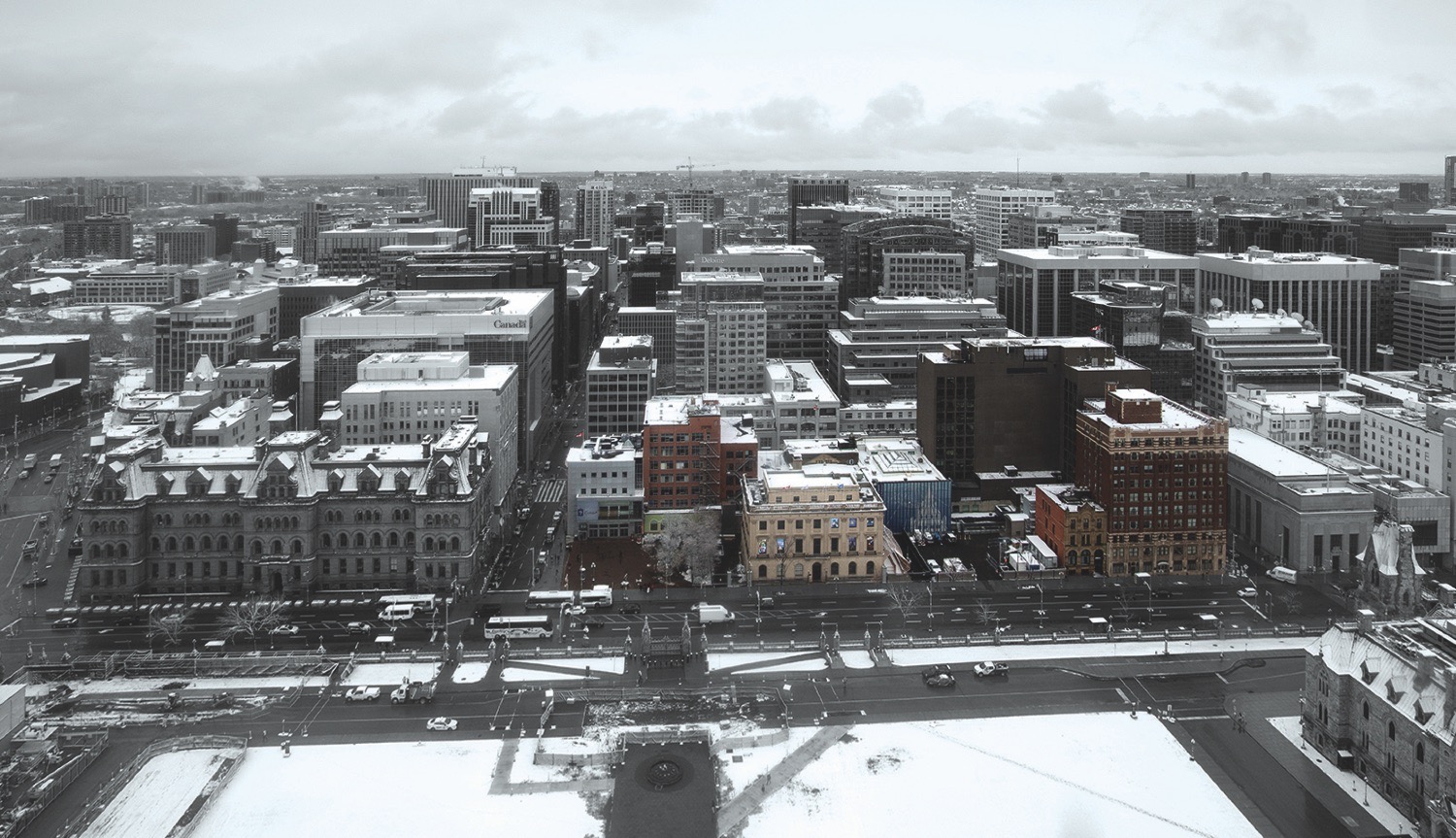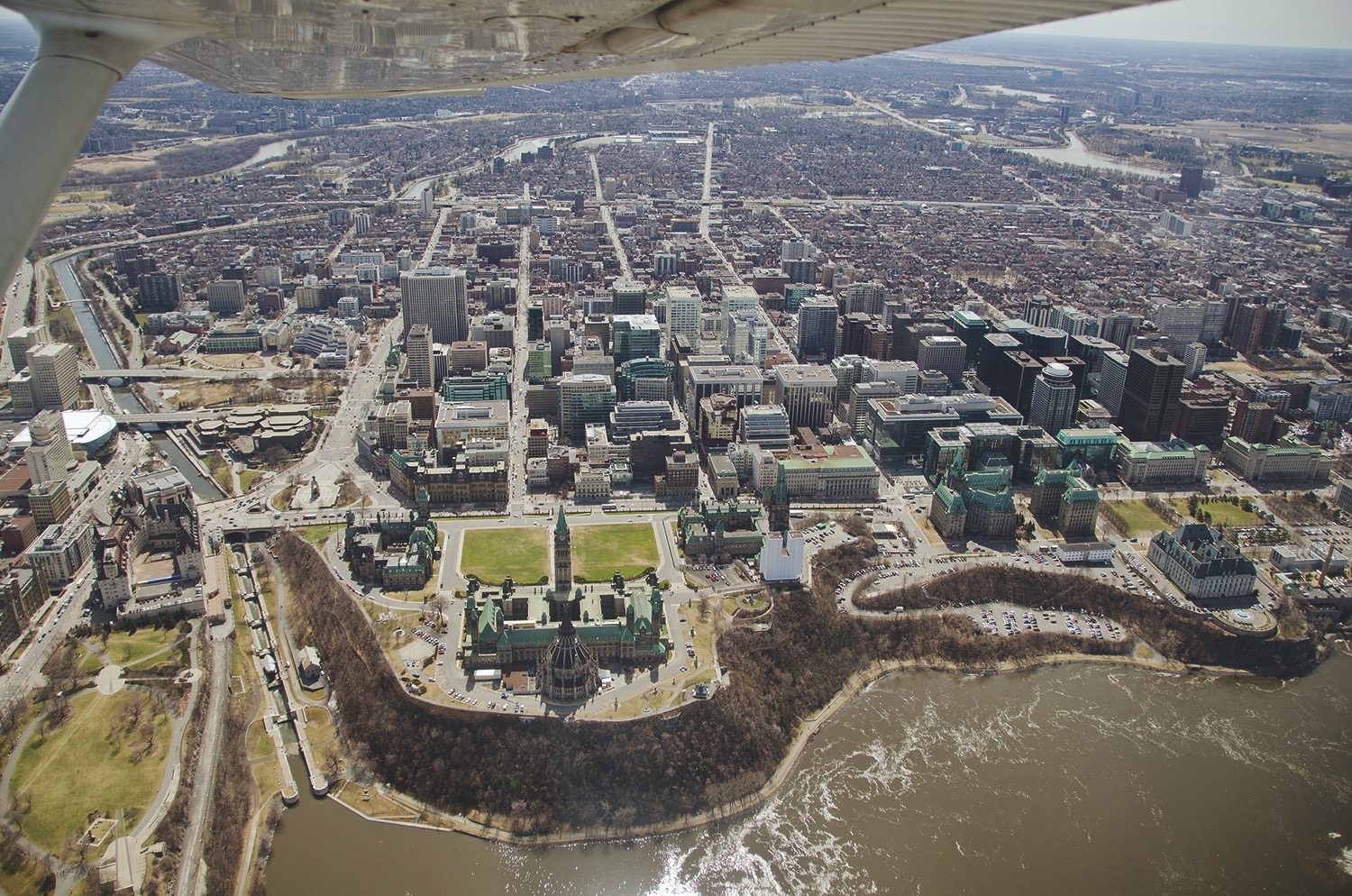RAIC Journal: A Philosophical Approach to Block 2
An interview with honorary jury chair John Ralston Saul on the significance of Block 2.

In 2020, a design competition kicked off in Ottawa to reinvigorate an oft-forgotten portion of Parliament Hill. Block 2—the city block directly facing Parliament Hill on Wellington Street—will be revitalized through the winning design submitted by one of the twelve teams currently in competition.
The project is technically challenging, with a requirement to be zero-carbon-ready. It must also negotiate the presence of several heritage-designated buildings, as well as a mid-block parcel designated as the Indigenous Peoples Space, which is being concurrently designed. But beyond these considerations, there is a philosophical element that needs to be incorporated into the final design of Block 2. To bring these concerns to the forefront, writer and political philosopher John Ralston Saul was invited to serve as the Honorary Chair for the Block 2 Design competition.
“I’ve always been interested in what they call Block 2,” says Saul. “I’m not an architect—I’ve been trained as a historian, political scientist, philosopher—but one of the pieces I’ve always worked with is architecture. Architecture runs through all my novels, it runs through my essays. It’s always been an element in how I think about things when I write philosophy.”
Saul has held a longstanding fascination with the role the three Parliament buildings—East, Centre, and West Block—play in the Canadian psyche. For him, the buildings, originally constructed following an 1859 competition, were central to the shaping of Canadian democracy. When the original Centre Block burned down in 1916, it was immediately replaced by an even more dramatic building: an architectural statement about international engagement and the sacrifice of Canada’s soldiers in World War I. The Great Lawn framed by the three buildings remains a key national congregation space where Canadians and visitors from abroad meet, hold demonstrations and celebrate.

Parliament’s siting on a cliff overlooking the Ottawa River is equally significant. “It’s all connected to the idea that Canada is a place of rivers and lakes, and that for thousands of years, everything happened along those rivers and lakes,” says Saul. “Right up until the railways, all transportation was by water, most of it by Indigenous means of transport. And the Ottawa River is one of the great liquid highways of Canada.”
“The rivers in Canada weren’t about divisions—they were about linkages,” he adds. “It’s hard to think of a more dramatic setting or intentional concept for legislative buildings.”
For Saul, the design competition and reinvigoration of Block 2 is the third—and final—major architectural opportunity, coming after the 1859 competition and the 1920 Centre Block, to make a built statement at the heart of Canada’s democracy.
“I’ve always known that at some point we would get around to filling in the biggest missing piece—which was what we now call Block 2, but we could also call the fourth side of Parliament Square, or the closing of Parliament Hill,” says Saul. “I realize that there is the whole utilitarian aspect to what the building on Block 2 will have to be and do [in containing Parliamentary offices, among other functions]. And we know that the Sparks Street side of the building will be some kind of architectural palimpsest, given the number of protected buildings.”
“But the Wellington side—the Fourth Side of Parliament Square—cannot help but call for drama, inspiration, and frankly, magic. There has to be something astonishing about what is done there, which will fit in with the magic of the other three Parliament buildings.”
“This is an opportunity to do something completely different,” says Saul.

What is that statement to be? Saul notes that the project’s success must be based on re-examining and revaluating the earlier designs. “What did we get wrong the first two times around? What did we leave out? What has changed?”
“First of all, we are completely missing the astonishing contribution and role played by Indigenous peoples, first with their own forms of democracy over thousands of years, which we never talk about in modern times,” says Saul. “It was erased from the public conversation.”
Working with Indigenous groups to incorporate principles and architectural elements into the design shouldn’t be the only consideration for Reconciliation brought into the project, but it is a important step. Saul believes that the “single most important task in Canada today” is “rebuilding a 500-year-old relationship with Indigenous Peoples.”
“There were all of the treaties and relationships that existed for centuries, and then they were betrayed in vicious, violent, and evil ways,” said Saul. “Indigenous peoples have found a way to reclaim and change the discourse to a more honest narrative that Canada needs to reconcile with to build any lasting relationship.”
Indigenous beliefs on the relationship of people to place is another consideration for the project that Saul believes can benefit the design teams.
“It’s not about humans being above the place, or building their buildings to look down upon the place. It’s about the people and place being one and the same.”

In addition to Canada’s relationship with Indigenous Peoples, there is another core aspect of our national identity absent from major governmental buildings and symbols.
“The other big missing element is that we are a country of immigration,” said Saul. “We have not—in the other three buildings—imagined how to conceptualize what role immigration has on the Canadian identity.”
The challenge will entail designing buildings that convey these ideas without being didactic, or relying on traditional design elements from earlier government buildings.
“You have to stand back from all of the assumptions that we have and break those rules to take us down a different road,” says Saul.
This fall, the twelve design teams have submitted entries to a first stage of the competition; soon, a shortlist of up to six teams will be announced to advance their designs further, with the winner chosen next spring. The hope is that all Canadians will see an aspect of themselves reflected in the chosen design.
“I am incredibly excited and honoured to be part of this process,” says Saul. “Whatever happens with the site, if it is successful, will change how we imagine ourselves.”
